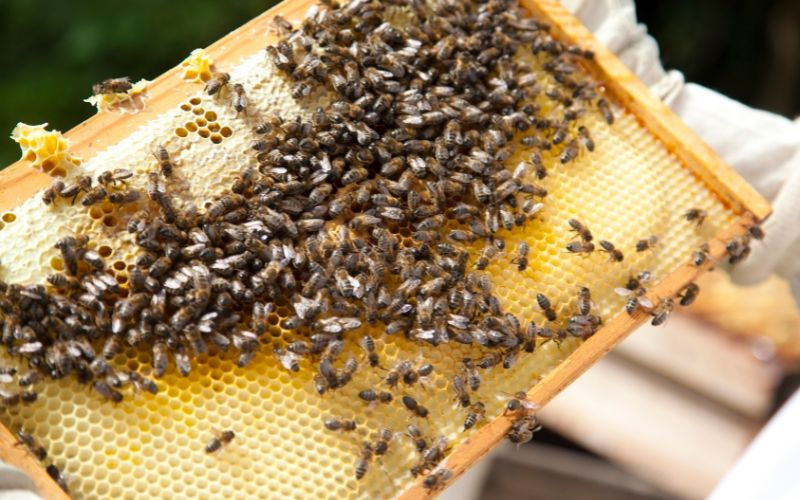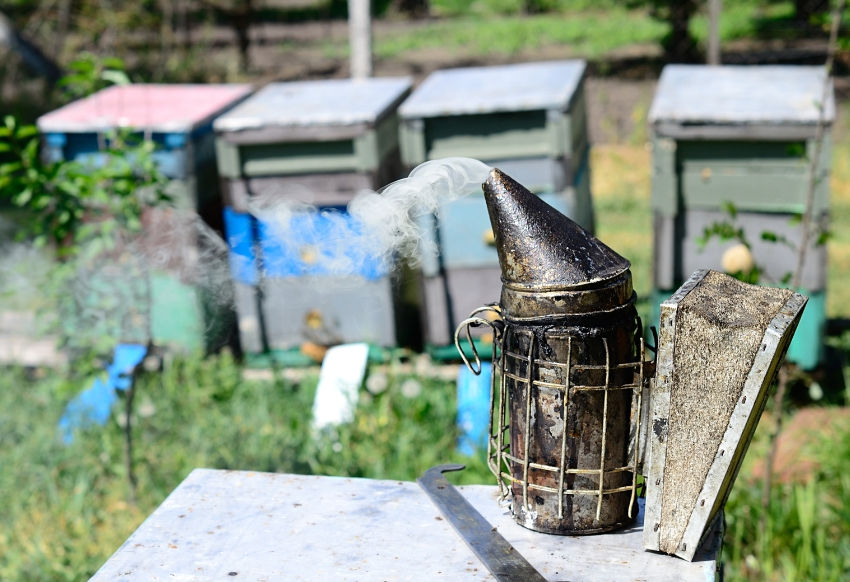Is There Brood In My Beehive In Winter?
- Laurence Edwards

- Nov 11, 2024
- 5 min read
Is There Winter Brood In This Colony? Exploring the Broodless Period in Beehives
As the days grow shorter and the temperatures start to drop, beekeepers eagerly await the arrival of the winter broodless period and often ask the question, is there brood in my beehive? This unique phase in the annual cycle of a honeybee colony is a crucial time for beekeepers to effectively manage their hives and combat the dreaded varroa mite. In this in-depth blog post, we'll dive into the intricacies of the winter broodless period, exploring when it typically occurs, why it's important, and how beekeepers can leverage this time to optimise the health and productivity of their colonies.

Understanding the Winter Broodless Period
The winter broodless period is a natural phenomenon that often occurs in honeybee colonies in northern climates as they prepare for the colder months ahead. During this time, the queen bee significantly reduces or even ceases egg-laying, resulting in a temporary absence of brood (developing bees) within the hive. This broodless state is a survival strategy employed by the colony to conserve resources and ensure the survival of the colony through the winter.
Typically, the winter broodless period in temperate climates like the UK can be observed in late November and early December. However, the exact timing can vary depending on a variety of factors, including the local climate, the strength of the colony, and the availability of resources. Never ever take out frames to confirm a broodless period as you may squish the queen and the colony will then die over winter. It's not worth the risk!

The Importance of the Winter Broodless Period
The winter broodless period holds immense significance for beekeepers, as it presents a unique opportunity to effectively manage the varroa mite, a devastating parasite that can wreak havoc on honeybee colonies if left unchecked. Varroa mites primarily reproduce within the sealed brood cells of the hive, and their population can quickly spiral out of control if not properly managed.
During the winter broodless period, when there is no brood present, the varroa mites have nowhere to reproduce, making them more vulnerable to some treatments, especially those that cannot penetrate wax cappings. This is the optimal time for beekeepers to administer a single, targeted application of oxalic acid sublimation, a highly effective varroa mite treatment that can significantly reduce mite populations without harming the bees.
A single blast of oxalic acid on a colony that is genuinely broodless is the time to do it, as this is when you will get the best knockdown for your Varroa. By timing the oxalic acid treatment during the winter broodless period, beekeepers can effectively disrupt the varroa mite's reproductive cycle, setting the stage for a healthier and more productive colony in the coming spring.

Identifying the Winter Broodless Period
Determining the onset of the winter broodless period can be a bit tricky, as it's not always a clear-cut transition. Beekeepers need to be vigilant and closely monitor their colonies to identify the signs of this crucial phase.
A thorough inspection of a colony can be used to assess the presence of brood. By carefully examining each frame, it was determined that this particular colony was indeed broodless at the time of the inspection, which was in late November. The back end of November is a good time to get in there and do the oxalic acid treatment.
IMPORTANT: I ONLY INSPECTED THIS COLONY TO SHOW YOU THAT THIS COLONY OF BEES WAS BROODLESS IN MID NOVEMBER. PLEASE DO NOT REMOVE FRAMES TO CONFIRM BROODLESSNESS. IF YOU WANT A BELT AND BRACES METHOD, TREAT 3 TIMES AT 5 DAY INTERVALS AROUND THE MID TO END OF NOVEMBER IN THE UK.
Some key indicators that a colony has entered the winter broodless period include:
Absence of eggs and larvae on the frames (never open to check)
Reduced activity and clustering of the worker bees
Decreased foraging activity outside the hive
Reduced or halted queen egg-laying
It's important to note that the winter broodless period is not a fixed, universal occurrence. Factors such as the local climate, the strength of the colony, and the availability of resources can all influence the timing and duration of this phase. Beekeepers should closely monitor their colonies and be prepared to adjust their management strategies accordingly. For example, in 2024, it's been quite mild in Oct and Nov so I would potentially delay the Oxalic Acid treatment until end Nov/early Dec to aim for the best period to achieve a maximum knockdown.

Leveraging the Winter Broodless Period for Varroa Mite Management
The winter broodless period is a critical time for beekeepers to effectively manage the varroa mite, a persistent and devastating parasite that can cripple honeybee colonies if left unchecked. As mentioned earlier, the absence of brood during this phase makes the varroa mites more vulnerable to targeted treatment, making it the optimal time for a single, effective application of oxalic acid.
Oxalic acid is a highly effective varroa mite treatment that can significantly reduce mite populations without harming the bees. By administering a single dose of oxalic acid during the winter broodless period, beekeepers can disrupt the varroa mite's reproductive cycle, preventing them from multiplying and infesting the colony.
A single blast of oxalic acid on a colony that is genuinely broodless is the time to do it, as this is when you will get the best knockdown for your Varroa. This targeted approach not only helps to control the varroa mite population but also minimises the risk of repeated, disruptive treatments throughout the year.
It's important to note that while oxalic acid is a highly effective varroa mite treatment, it should be used with caution and in accordance with local regulations and best practices. Beekeepers should always follow the manufacturer's instructions and take appropriate safety precautions when handling and applying the product.
In addition to the oxalic acid treatment, beekeepers can also leverage the winter broodless period to monitor their colonies' varroa mite levels. By tracking the number of mites being dropped on the hive's bottom board, beekeepers can gain valuable insights into the mite population and adjust their management strategies accordingly.
By taking a proactive and strategic approach to varroa mite management during the winter broodless period, beekeepers can set their colonies up for success in the coming spring, ensuring a healthy and productive season ahead.

Conclusion
The winter broodless period is a critical phase in the annual cycle of a honeybee colony, presenting both challenges and opportunities for beekeepers. By understanding the importance of this unique period, identifying its onset, and leveraging it for effective varroa mite management, beekeepers can set their colonies up for long-term success and ensure the continued health and productivity of their hives.
The back end of November is the time to go in and do a single blast of oxalic acid, as this is when you will get the best knockdown for your Varroa on a colony that is genuinely broodless. By following best practices and prioritising the well-being of their colonies, beekeepers can navigate the winter broodless period with confidence and set the stage for a thriving beekeeping operation in the years to come.
To stay up-to-date with the latest beekeeping tips and techniques, be sure to subscribe to the Black Mountain Honey YouTube channel. Join the channel membership to access exclusive content and support the channel's mission of providing valuable beekeeping knowledge to the community.














Comments